- Administrator
- Albums and Singles
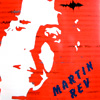 Martin Rev's first solo albums from 1980 and 81, as collected on this new CD, document what he was doing at the beginning of his post-Suicide solo career. As usual I have a hard time empathizing with the punk zeitgeist because I was really too young at the time (twelve in 1977) to comprehend the prevailing culture. I must have picked up some of it because occasionally an artifact from the period will unlock waves of fear and abhorrence in me, Thames TV for example, or Julien Temple's "The Filth and the Fury," which plunged me into a foul mood for a whole week. I'm trying to listen to this CD in that context but I can't get there. American punk was different anyhow, so I guess I'm not to blame. But even in today's terms this is a good CD. Nearly all instrumental, these electronic music pieces show Rev's unique personal style, somehow breathy and spacious, presumably resulting in part from his coming to grips with the available equipment of the period. There are catchy distinctive melodic structures and the electro-beats are uniquely his own. It has considerable reserve, tasteful poise without posturing, varying degrees of sinister ambience and individualist expression, all combined with a substantial experimental component, both musical and technical. With the exception of "Marvel," an extended ametrical soundscape reminiscent of 70s Tangerine Dream and quite unlike anything else on the disc, I don't think there's much to be gained by relating this to contemporary UK and German electro new wave. There are however many elements that remind me of more recent music: of the examples I'll mention only how ?-Ziq's "Balsa Lightning" recollects Rev's "Baby Oh Baby." This aspect adds validity to Rev's credentials as one of the mid-wives of electro pop. Recommeded.
Martin Rev's first solo albums from 1980 and 81, as collected on this new CD, document what he was doing at the beginning of his post-Suicide solo career. As usual I have a hard time empathizing with the punk zeitgeist because I was really too young at the time (twelve in 1977) to comprehend the prevailing culture. I must have picked up some of it because occasionally an artifact from the period will unlock waves of fear and abhorrence in me, Thames TV for example, or Julien Temple's "The Filth and the Fury," which plunged me into a foul mood for a whole week. I'm trying to listen to this CD in that context but I can't get there. American punk was different anyhow, so I guess I'm not to blame. But even in today's terms this is a good CD. Nearly all instrumental, these electronic music pieces show Rev's unique personal style, somehow breathy and spacious, presumably resulting in part from his coming to grips with the available equipment of the period. There are catchy distinctive melodic structures and the electro-beats are uniquely his own. It has considerable reserve, tasteful poise without posturing, varying degrees of sinister ambience and individualist expression, all combined with a substantial experimental component, both musical and technical. With the exception of "Marvel," an extended ametrical soundscape reminiscent of 70s Tangerine Dream and quite unlike anything else on the disc, I don't think there's much to be gained by relating this to contemporary UK and German electro new wave. There are however many elements that remind me of more recent music: of the examples I'll mention only how ?-Ziq's "Balsa Lightning" recollects Rev's "Baby Oh Baby." This aspect adds validity to Rev's credentials as one of the mid-wives of electro pop. Recommeded.
samples:
Read More
- Administrator
- Albums and Singles
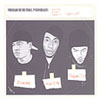 In recent years, some independent HipHop artists such as Antipop Consortium and the Definitive Jux family have managed to stimulate the genre by fusing it with elements of electronica in their backing tracks, making for more cohesive compositions and introducing them to a newer audience. In keeping with that direction, the ideal collaboration between rappers Mos Def and the windy city's Diverse with Prefuse 73 only certifies that development on "Wylin' Out." This EP is comprised of its title track in full form as well as an instrumental version, along with two separate remixes from K-Kruz and RJD2. Prefuse 73's electro-souled, signature syncopated instrumental makes for the perfect backdrop for the MCs to trade their quick, sharp and insightful rhymes with masterful precision. The K-Kruz remix eschews the existing backing track in favor of sampled Fender Rhodes, scratches and more broken up beats. While musically not as heavy as the original track, the vocals becoming more intelligible in the mix adds a new weight to it. RJD2's bouncy remix provides a repeated motif built from gritty big band-esque shots and subtle scratches driven by sampled drumkit and percussion, giving it a real 60s soundtrack groove. Rounding out the EP is the original instrumental version which showcases Prefuse 73's HipHop sensibility and knack for arranging as we've come to know and love. "Wylin' Out" has got my vote for the coolest collaboration of the year.
In recent years, some independent HipHop artists such as Antipop Consortium and the Definitive Jux family have managed to stimulate the genre by fusing it with elements of electronica in their backing tracks, making for more cohesive compositions and introducing them to a newer audience. In keeping with that direction, the ideal collaboration between rappers Mos Def and the windy city's Diverse with Prefuse 73 only certifies that development on "Wylin' Out." This EP is comprised of its title track in full form as well as an instrumental version, along with two separate remixes from K-Kruz and RJD2. Prefuse 73's electro-souled, signature syncopated instrumental makes for the perfect backdrop for the MCs to trade their quick, sharp and insightful rhymes with masterful precision. The K-Kruz remix eschews the existing backing track in favor of sampled Fender Rhodes, scratches and more broken up beats. While musically not as heavy as the original track, the vocals becoming more intelligible in the mix adds a new weight to it. RJD2's bouncy remix provides a repeated motif built from gritty big band-esque shots and subtle scratches driven by sampled drumkit and percussion, giving it a real 60s soundtrack groove. Rounding out the EP is the original instrumental version which showcases Prefuse 73's HipHop sensibility and knack for arranging as we've come to know and love. "Wylin' Out" has got my vote for the coolest collaboration of the year.
samples:
Read More
- Diane Lewis
- Albums and Singles
 Following closely on Matador's 2001 twentieth anniversary edition of 1971's classic 'Underwater Moonlight,' 'Nextdoorland' is the first Soft Boys studio album in over 20 years. The whole 1980 lineup is here, and 'Nextdoorland' is peppered with the same giddy bouncing rhythms and insinuating Eastern scales that propelled the Boys' early collaborations. (Mastermind Robyn Hitchcock, of course, launched his strong solo career after the first life of the Soft Boys, whereas guitarist Kimberley Rew made a mark with the 80s hit "Walking on Sunshine" with Katrina and the Waves.) Even the cover image—of two candlelit mannequins with bleached mammalian skulls, propped up in bed—recalls the slightly misshapen, seaside dummies sported on 'Underwater Moonlight' (figures all constructed by Hitchcock's wife Lal). Like the latter day cover art, the contemporary Soft Boys shape their new sound with, essentially, the same materials, but there is certainly a shift in terrain. 'Nextdoorland' has less of the early Soft Boys' vitriol. It's definitely them, but more subdued, most notably missing the confusion, spit, and bile that lent their earlier lyrics the guitar lines' razor edge. Overall then, this pulsating album is similarly surrealistic (and on occasion incomprehensible) when it comes to the lyrics, but both lyrically and musically without as much substance as one would like. A few listeners might prefer the lighter touch?the parts are all distinct and crisp, the guitars absolutely sparkle, and the melodies here soar more often than they pitch back and forth. But, who woulda thunk, it's just not the same. Standout tracks here are "I Love Lucy," "Unprotected Love," and "Strings." ("My Mind is Connected?" edges on David Byrne of the 'David Byrne' period, and "Mr. Kennedy" and "Japanese Captain" are a little fogey for me.) Lasting lyrical impressions include: "Give me unprotected love / Like a baby in a football / Like a fish inside a glove" (sketchy!) and "Evil is the new enemy / Evil is the new bad [?] Take your partner by the middle / Like a burger in a griddle."
Following closely on Matador's 2001 twentieth anniversary edition of 1971's classic 'Underwater Moonlight,' 'Nextdoorland' is the first Soft Boys studio album in over 20 years. The whole 1980 lineup is here, and 'Nextdoorland' is peppered with the same giddy bouncing rhythms and insinuating Eastern scales that propelled the Boys' early collaborations. (Mastermind Robyn Hitchcock, of course, launched his strong solo career after the first life of the Soft Boys, whereas guitarist Kimberley Rew made a mark with the 80s hit "Walking on Sunshine" with Katrina and the Waves.) Even the cover image—of two candlelit mannequins with bleached mammalian skulls, propped up in bed—recalls the slightly misshapen, seaside dummies sported on 'Underwater Moonlight' (figures all constructed by Hitchcock's wife Lal). Like the latter day cover art, the contemporary Soft Boys shape their new sound with, essentially, the same materials, but there is certainly a shift in terrain. 'Nextdoorland' has less of the early Soft Boys' vitriol. It's definitely them, but more subdued, most notably missing the confusion, spit, and bile that lent their earlier lyrics the guitar lines' razor edge. Overall then, this pulsating album is similarly surrealistic (and on occasion incomprehensible) when it comes to the lyrics, but both lyrically and musically without as much substance as one would like. A few listeners might prefer the lighter touch?the parts are all distinct and crisp, the guitars absolutely sparkle, and the melodies here soar more often than they pitch back and forth. But, who woulda thunk, it's just not the same. Standout tracks here are "I Love Lucy," "Unprotected Love," and "Strings." ("My Mind is Connected?" edges on David Byrne of the 'David Byrne' period, and "Mr. Kennedy" and "Japanese Captain" are a little fogey for me.) Lasting lyrical impressions include: "Give me unprotected love / Like a baby in a football / Like a fish inside a glove" (sketchy!) and "Evil is the new enemy / Evil is the new bad [?] Take your partner by the middle / Like a burger in a griddle."
samples:
Read More
- Administrator
- Albums and Singles
 Tim Hecker's second outing on the Substractif sublabel of Alien8 with a 25-minute EP of DSP and plunderphonics based on none other than my favourite rockers, Van Halen. Fennesz's treatments of The Beach Boys and the Stones are one thing, but putting the opening riff from "Ain't Talkin' 'Bout Love" (from which the EP's title is taken) through the lo-fi digital mangler, as Hecker does on "Introducing Carl Cocks", is a more unlikely idea. With Eddie's classic and beautiful riff teased slowly into a perfect granular blur, it's an outstanding track, though what it has to do with techno-lord Carl Cox is anyone's idea. The remainder of the tracks' samples are split between musical sources and bitter interviews, on-stage raps, and radio coverage of the band's disputes, with comprehensible titles such as "Sammy Loves Eddie Hates David" but the baffling "The Return Of Sam Snead", whose only connection with VH I know of is that he's in a load of Dead Pools with poor old Eddie.
Tim Hecker's second outing on the Substractif sublabel of Alien8 with a 25-minute EP of DSP and plunderphonics based on none other than my favourite rockers, Van Halen. Fennesz's treatments of The Beach Boys and the Stones are one thing, but putting the opening riff from "Ain't Talkin' 'Bout Love" (from which the EP's title is taken) through the lo-fi digital mangler, as Hecker does on "Introducing Carl Cocks", is a more unlikely idea. With Eddie's classic and beautiful riff teased slowly into a perfect granular blur, it's an outstanding track, though what it has to do with techno-lord Carl Cox is anyone's idea. The remainder of the tracks' samples are split between musical sources and bitter interviews, on-stage raps, and radio coverage of the band's disputes, with comprehensible titles such as "Sammy Loves Eddie Hates David" but the baffling "The Return Of Sam Snead", whose only connection with VH I know of is that he's in a load of Dead Pools with poor old Eddie.While some people view this record as a destructive fuck-you to spandex rock, I'd prefer to see it as affectionate, but in honesty neither conclusion is easily drawn. The music is more "Fennesz Plays" than V/VM, but unlike the pure tribute of Drop Nineteens' "Ease It Halen" (or the mindless cock-ragga pop mish-mash of Apollo 440's "Ain't Talkin'" cover), VH's rock bloat isn't put to one side, thanks to the soundbites of breakup bitching and egotism, and the hideous sketch of David Lee Roth on the cover. What's certain is that while Steve Albini could click his fingers and make AC/DC cool, this record is simply good clean fun for micro-fans. It isn't going to make Mark Kozelek sing "Hot For Teacher."
samples:
Read More
- Steve Smith
- Albums and Singles
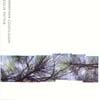 Jonathan Coleclough has released several stunning albums of extended drones derived from acoustic sources, and 'Low Ground' is no exception. The sounds on this recording are surprisingly electronic; they're more digitally-veiled and alien than on Coleclough's other records. With five tracks, three of them collaborative and two solo, there's quite a bit of textural variety on this CD.
Jonathan Coleclough has released several stunning albums of extended drones derived from acoustic sources, and 'Low Ground' is no exception. The sounds on this recording are surprisingly electronic; they're more digitally-veiled and alien than on Coleclough's other records. With five tracks, three of them collaborative and two solo, there's quite a bit of textural variety on this CD.
Coleclough and Potter are joined by Tim Hill on two tracks, including the first, "Beech Flutter," which combines a sharp, slowly breathing drone with little electronic whirs and beeps. They also use some processed whip-like and crashing sounds that, later on in the piece, are echoed and sound almost like the flapping of wings. The sustained tones that dominate this track are soothing despite their edgy brightness, as they are subtly filtered and timestretched, and are as magnificent and detailed as anything else Coleclough has released.
"Sinister Dexter" opens with some very nice, extended horn-like tones that grow dissonant before evolving into a melange of malevolent croaking sounds. These gradually increase in pitch and noisiness before being submerged in effects and then replaced by a really dark sounding mechanical rhythm, almost like a heavily filtered organ. This continues for the duration of the piece while some phased and panned synth-like sounds emerge. Though I don't really care for the unbroken mechanical rhythm Potter uses in this track, the other sounds are quite fascinating. "Shudder" is a shorter piece that combines a rumbling mechanical noise run through the tremolo and reverb effects with some squeaking sounds and volume swells. It ends with some beautiful hazy sounds and a distant rumbling. "Tunnel" contains a wealth of detail, mixing a repetitive synthesizer-like noise with layers of filtered drones and the sound of splashing water. The piece builds up towards the end, as Coleclough employs some squeaking noises and ominous icy tones. "Beech Shadow" starts with subtly modulated low frequency sine waves and some really strange digitally created sounds. The shimmering tones heard in the first track slowly emerge, and the piece takes its time developing into a lush, expansive collection of electronic hissing noises. It's an absolutely wonderful ending, soothing but slightly sinister. 'Low Ground' is definitely another great work in the Coleclough/Potter discography. The sounds used are fascinating, and there isn't a single boring moment on this disc.
 
samples:
 
Read More
- Administrator
- Albums and Singles
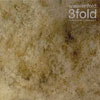 One unfortunate by-product of exciting new music is that it generates a rumbling amongst its most ardent fans for a continued envelope push. With all the clamoring for newness and heretofore unheard sounds and effects from IDM's most avid glitch aficionados, the scene as a whole tends to skip over the here-and-now, focusing instead on whatever is next. While there's a glut of Boards of Canada cloning happening on mp3.com, there are also some really great examples available elsewhere of people who are stopping to smell Autechre's roses a bit while the boys themselves are time stretching digital flatulence ad infinitum. Wauvenfold's 3fold is a compilation of their earlier ep's, and it's certainly not going to excite people who are chasing the newest carrot. But I've been looking for more music like this; music that grooves, (albeit in a very digital way,) and that has just enough stuttering beats, filter-passed melodies, and time-warped textures to stay interesting. While this record doesn't congeal the way a singular album by the group might, it does offer an experience of their progression from stark, clicking beats where the focus is on rhythm to later, more multi-textured works that play more with space and depth. Wauvenfold work within a framework that has been established by others, but they hold their own. Song titles like 'Pixel Stitched' and 'Obliq Itch' should give you a rough idea of what to expect here: tweaked beats, simple non-linear melodies, and a dash of chaotic interruption that is typical of music composed in a digital environment; but it's all handled rather well. 3fold isn't the newest sound, but it's more of a good sound, and more of good is always welcome at my house.
One unfortunate by-product of exciting new music is that it generates a rumbling amongst its most ardent fans for a continued envelope push. With all the clamoring for newness and heretofore unheard sounds and effects from IDM's most avid glitch aficionados, the scene as a whole tends to skip over the here-and-now, focusing instead on whatever is next. While there's a glut of Boards of Canada cloning happening on mp3.com, there are also some really great examples available elsewhere of people who are stopping to smell Autechre's roses a bit while the boys themselves are time stretching digital flatulence ad infinitum. Wauvenfold's 3fold is a compilation of their earlier ep's, and it's certainly not going to excite people who are chasing the newest carrot. But I've been looking for more music like this; music that grooves, (albeit in a very digital way,) and that has just enough stuttering beats, filter-passed melodies, and time-warped textures to stay interesting. While this record doesn't congeal the way a singular album by the group might, it does offer an experience of their progression from stark, clicking beats where the focus is on rhythm to later, more multi-textured works that play more with space and depth. Wauvenfold work within a framework that has been established by others, but they hold their own. Song titles like 'Pixel Stitched' and 'Obliq Itch' should give you a rough idea of what to expect here: tweaked beats, simple non-linear melodies, and a dash of chaotic interruption that is typical of music composed in a digital environment; but it's all handled rather well. 3fold isn't the newest sound, but it's more of a good sound, and more of good is always welcome at my house. Read More
 The direction of the latest five-song EP from Scott Herren as Savath + Savalas is in keeping with 2000's 'Folk Songs for Trains, Trees and Honey' in that the groundwork of electronica, sampling and live performance bleeds perfectly into each other and still gives off somewhat of an organic feel. "Rolls and Waves of Ignorance" opens the disc with a nice wash of swelling minor chords and percussion under climbing upright bass lines and melodic tenor saxophone, which weave throughout. The mood is tranquil yet somber and somewhat meditative, and, as the title may suggest, with an almost freejazz-type statement to it. "Paths in Soft Focus" grooves along nicely with some quirky keyboard and guitar arpeggiation and long bass tones which are all anchored by the solid drumming of Johnny Herndon (Tortoise, Isotope 217, A Grape Dope). One of the more splendid pieces of music I've heard lately would be "Folk Song for Cello," thanks in part to its brilliant arrangement and orchestration. Building from a plucked cello progression, acoustic guitar harmonics, accordion chords and a hammer dulcimer (!), the tune settles in to a laid-back groove of synth bass, tight drums and playful keyboard and vibe flourishes. "Decatur Queen" goes from repetitive acoustic guitar, upright bass and quietly squelching percussion to a ripping snare line that drives the tune into a full-sounding romp of rhythmic keyboards and wah guitar, complete with layers of horns while closing off the disc, "Rolls and Waves of Acknowledgement" brings the EP full-circle. This track follows the same compositional style as the opener, only more sparsely arranged and with the instrumentation of fuzz guitar, bowed strings and a fuller bass sound. Ironically enough, "Acknowledgement" sounds quite dark in comparison to "Ignorance." Way too short at just over seventeen minutes, this highly recommended EP may have you checking out the various other projects Mr. Herren has on the go at the moment (Prefuse 73, Delarosa + Asora) until another full length disc makes its way out there.
The direction of the latest five-song EP from Scott Herren as Savath + Savalas is in keeping with 2000's 'Folk Songs for Trains, Trees and Honey' in that the groundwork of electronica, sampling and live performance bleeds perfectly into each other and still gives off somewhat of an organic feel. "Rolls and Waves of Ignorance" opens the disc with a nice wash of swelling minor chords and percussion under climbing upright bass lines and melodic tenor saxophone, which weave throughout. The mood is tranquil yet somber and somewhat meditative, and, as the title may suggest, with an almost freejazz-type statement to it. "Paths in Soft Focus" grooves along nicely with some quirky keyboard and guitar arpeggiation and long bass tones which are all anchored by the solid drumming of Johnny Herndon (Tortoise, Isotope 217, A Grape Dope). One of the more splendid pieces of music I've heard lately would be "Folk Song for Cello," thanks in part to its brilliant arrangement and orchestration. Building from a plucked cello progression, acoustic guitar harmonics, accordion chords and a hammer dulcimer (!), the tune settles in to a laid-back groove of synth bass, tight drums and playful keyboard and vibe flourishes. "Decatur Queen" goes from repetitive acoustic guitar, upright bass and quietly squelching percussion to a ripping snare line that drives the tune into a full-sounding romp of rhythmic keyboards and wah guitar, complete with layers of horns while closing off the disc, "Rolls and Waves of Acknowledgement" brings the EP full-circle. This track follows the same compositional style as the opener, only more sparsely arranged and with the instrumentation of fuzz guitar, bowed strings and a fuller bass sound. Ironically enough, "Acknowledgement" sounds quite dark in comparison to "Ignorance." Way too short at just over seventeen minutes, this highly recommended EP may have you checking out the various other projects Mr. Herren has on the go at the moment (Prefuse 73, Delarosa + Asora) until another full length disc makes its way out there.
samples:
- Administrator
- Albums and Singles
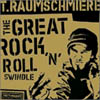 Is there too much I in your DM? Leading innovators in fun electronic dance music, Kompakt, has teamed up with the Berlin-based Shitkatapult label to release this full-lengther from Marco Haas (owner/operator of the Shitkatapult label). While it might not have the Coil-sample based tune or noise-based numbers from the recent live shows with Telefon Tel Aviv, it certainly has the fiery, raw energy that made the night F-U-N. Many readers might recognize the name from Hefty remixes or Kompakt compilations, but this release is far more deep, dark and sweaty than what might be expected from those tunes. Fuzzy digital bass and insanely punchy beats line a number of the tunes, the others are equally as fat-sounding; all are built of the stuff that makes the ass want to shake uncontrollably. (I can still even picture Marco's head bopping up and down just like Flat Eric.) Ripping the album title from an obvious punk reference, the artwork also clearly makes a stab at the punk days of stenciling. Heed the signs on the wall: this isn't a "pretty" or cute album. This is the stuff that can turn any dance floor into a seedy, sweaty meat market. Listening to songs like "Ravemusik," it seems painfully obvious that people like Chicks on Speed need to hire this German boy to make them some new beats. At only eight tracks, the album is a mighty fine treat and it's only the first of two full-length releases by Haas under the guise of T.Raumshmiere this year ('Anti' is due out in October through Hefty). Beg your local shops for this one or threaten the closest DJ shop with stink bombs if they look at you with the puppy-style cocked head.
Is there too much I in your DM? Leading innovators in fun electronic dance music, Kompakt, has teamed up with the Berlin-based Shitkatapult label to release this full-lengther from Marco Haas (owner/operator of the Shitkatapult label). While it might not have the Coil-sample based tune or noise-based numbers from the recent live shows with Telefon Tel Aviv, it certainly has the fiery, raw energy that made the night F-U-N. Many readers might recognize the name from Hefty remixes or Kompakt compilations, but this release is far more deep, dark and sweaty than what might be expected from those tunes. Fuzzy digital bass and insanely punchy beats line a number of the tunes, the others are equally as fat-sounding; all are built of the stuff that makes the ass want to shake uncontrollably. (I can still even picture Marco's head bopping up and down just like Flat Eric.) Ripping the album title from an obvious punk reference, the artwork also clearly makes a stab at the punk days of stenciling. Heed the signs on the wall: this isn't a "pretty" or cute album. This is the stuff that can turn any dance floor into a seedy, sweaty meat market. Listening to songs like "Ravemusik," it seems painfully obvious that people like Chicks on Speed need to hire this German boy to make them some new beats. At only eight tracks, the album is a mighty fine treat and it's only the first of two full-length releases by Haas under the guise of T.Raumshmiere this year ('Anti' is due out in October through Hefty). Beg your local shops for this one or threaten the closest DJ shop with stink bombs if they look at you with the puppy-style cocked head.
samples:
Read More
- Steve Smith
- Albums and Singles
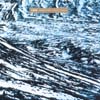 The Alternate Version of "Cake" is a reworking of Coleclough's original release: a single, 41-minute piece built mostly from processed field recordings, carefully controlled feedback, and bowed metal. It's an emotive and highly atmospheric work (if a bit linear), that spans a much wider dynamic range than his other compositions. The disc begins with recordings of birds and insects above a barely audible low-frequency rumble. This persists for several minutes at the edge of perception, occasionally augmented by footsteps, wind, and other noises captured in a peaceful landscape. Just as listening to the sounds of the forest begins to grow slightly tiresome, the piece starts moving forward, with layers of glistening, high-pitched feedback slowly emerging from the mix. The bird songs become bathed in gradually increasing amounts of reverb and effects-processing, and the rumble builds in volume and texture into a deep, ominous, metallic drone. All of the sounds used are detailed, and the resulting sum is quite interesting.
The Alternate Version of "Cake" is a reworking of Coleclough's original release: a single, 41-minute piece built mostly from processed field recordings, carefully controlled feedback, and bowed metal. It's an emotive and highly atmospheric work (if a bit linear), that spans a much wider dynamic range than his other compositions. The disc begins with recordings of birds and insects above a barely audible low-frequency rumble. This persists for several minutes at the edge of perception, occasionally augmented by footsteps, wind, and other noises captured in a peaceful landscape. Just as listening to the sounds of the forest begins to grow slightly tiresome, the piece starts moving forward, with layers of glistening, high-pitched feedback slowly emerging from the mix. The bird songs become bathed in gradually increasing amounts of reverb and effects-processing, and the rumble builds in volume and texture into a deep, ominous, metallic drone. All of the sounds used are detailed, and the resulting sum is quite interesting.I particularly like the manipulation in which the natural sounds are merged with the artificial—the birds take on a strange resonance, and the buzzing of insects sounds vaguely like the clicking and clanging of metal. The piece grows in intensity during its middle section as the feedback is amplified and digitally timestretched, and it is further embellished by what might be prepared piano and backward cymbals. After building into and persisting for a few moments in a crescendo of metallic tones and insect-like noises, during which the textures exhibit more evidence of digital treatment than in the usual Coleclough composition, things begin to get predictably and progressively calmer. The effect is absolutely hypnotic as the layers of ringing high-pitched tones slowly shift and change; the piece gradually moves back into the lower frequencies in which it began, and the bird calls re-emerge. A few repeating icy feedback tones establish a faint melody, evoking a reflective and somber mood. Just like his other releases, here Coleclough arranges ordinary sounds perfectly to create an environment that is sonically rich and definitely captivating. Due to its range of volume and sonic variety, this disc is probably his easiest listening so far; regardless, it is certainly a rewarding one.
samples:
Read More
- Administrator
- Albums and Singles
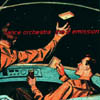 Vance Orchestra releases are hard to find, spread over obscure and very small lables, beautiful designed and highly original. The orchestra are in fact a duo of Dutch musicians, who record a kind of deep listening music one can search for an eternity without a clue where to begin. This is the first full-length album I could get hold of. Packed in a fold-out miniature album sleeve (with an additional booklet full of illustrations and details), the CD clocks in at over 70 minutes with only six tracks. All of the pieces share a similar sound development and compositional evolution, mainly produced by electronics but with some added vocal snippets and bass lines. As the artwork and the titles suggest, the songs are soundtracks for time and space travel or a fictious mission in an alternative reality. Vance Orchestra are aural landscape shapers in a league of their own, only vaguely comparable to Zoviet France. The mood setting is mainly calm and atmospheric, with the exception of "Trying To Stop The Pain," which has a disturbing quality that seems to go on for too long. When everything's shut down late at night or in the early morning hours, whenever a concentrated listening is possible, 'The E Emission' is most mind-altering. Waves of memories and impressions pass on by, making it quite easy to get lost in thoughts while this music permanently feeds the subconscious. There is a love for details and a constructive force behind the music which makes this CDR both a pleasure and a timeless treasure.
Vance Orchestra releases are hard to find, spread over obscure and very small lables, beautiful designed and highly original. The orchestra are in fact a duo of Dutch musicians, who record a kind of deep listening music one can search for an eternity without a clue where to begin. This is the first full-length album I could get hold of. Packed in a fold-out miniature album sleeve (with an additional booklet full of illustrations and details), the CD clocks in at over 70 minutes with only six tracks. All of the pieces share a similar sound development and compositional evolution, mainly produced by electronics but with some added vocal snippets and bass lines. As the artwork and the titles suggest, the songs are soundtracks for time and space travel or a fictious mission in an alternative reality. Vance Orchestra are aural landscape shapers in a league of their own, only vaguely comparable to Zoviet France. The mood setting is mainly calm and atmospheric, with the exception of "Trying To Stop The Pain," which has a disturbing quality that seems to go on for too long. When everything's shut down late at night or in the early morning hours, whenever a concentrated listening is possible, 'The E Emission' is most mind-altering. Waves of memories and impressions pass on by, making it quite easy to get lost in thoughts while this music permanently feeds the subconscious. There is a love for details and a constructive force behind the music which makes this CDR both a pleasure and a timeless treasure.
samples:
Read More
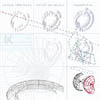 Here is a beautiful work by two artists who have different approaches to working with sound, but collaborate well. David Myers works with feedback-based sounds through various devices he has built, including a "feedback machine" I've seen him wear during live performances. (Suspended in front of his belly from a strap around his neck, he looked much like a cigarette girl from the 1930s.) Asmus Tietchens is not known to perform live, unless he's simply playing a recording of something composed in the studio. It seems his style is to take a sonic idea or source material, and go into the studio and work it for the length of an album (or double album). So you can pick up most any Tietchens CD or record, and hear a similarity between the pieces as he explores the many possibilities of his initial concept.
Here is a beautiful work by two artists who have different approaches to working with sound, but collaborate well. David Myers works with feedback-based sounds through various devices he has built, including a "feedback machine" I've seen him wear during live performances. (Suspended in front of his belly from a strap around his neck, he looked much like a cigarette girl from the 1930s.) Asmus Tietchens is not known to perform live, unless he's simply playing a recording of something composed in the studio. It seems his style is to take a sonic idea or source material, and go into the studio and work it for the length of an album (or double album). So you can pick up most any Tietchens CD or record, and hear a similarity between the pieces as he explores the many possibilities of his initial concept.'Flussdichte' is the third Tietchens / Myers collaboration. In this case, Myers sent Tietchens some material, and Tietchens went in the studio and built the pieces from this material. The result definitely has Tietchens' stamp on it — you could play it for any Tietchens fan and we'd guess it was his. (That's especially apparent to me when I hear sound that makes me think I'm in a submarine. No, I haven't been in one, but you may know this sound from movies, where the submarine is deep below the surface, and has its own ambient sounds coming from outside.) There are also some lovely melodic bits on the CD, including cut 6 ("T31:M5/10"), which sounds like amusement-park organ music, possibly emanating from an ancient merry-go-round. I won't try to describe any more — you will enjoy your own sound pictures when your allow you mind to drift with this CD playing.
Highly recommended.

